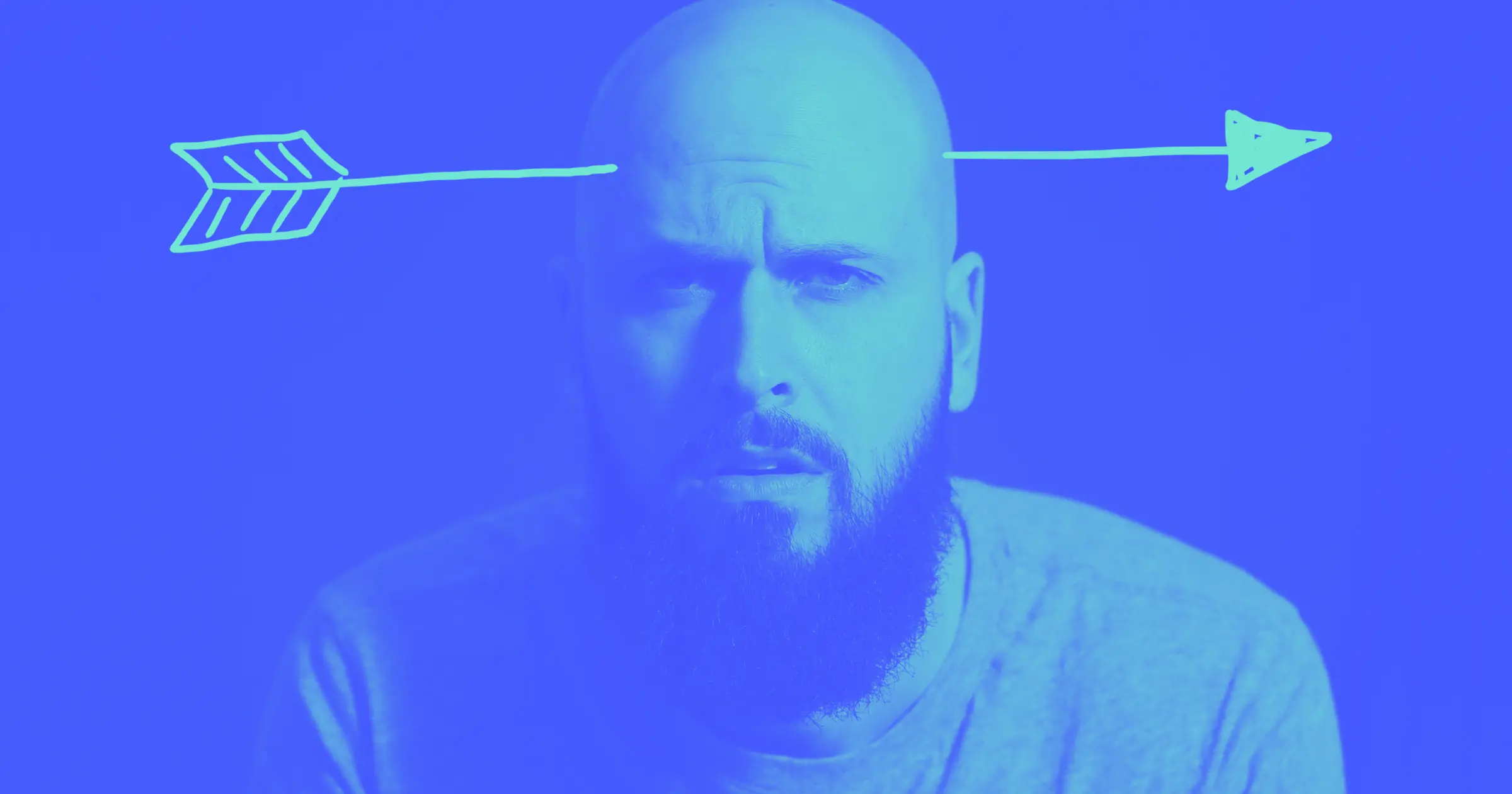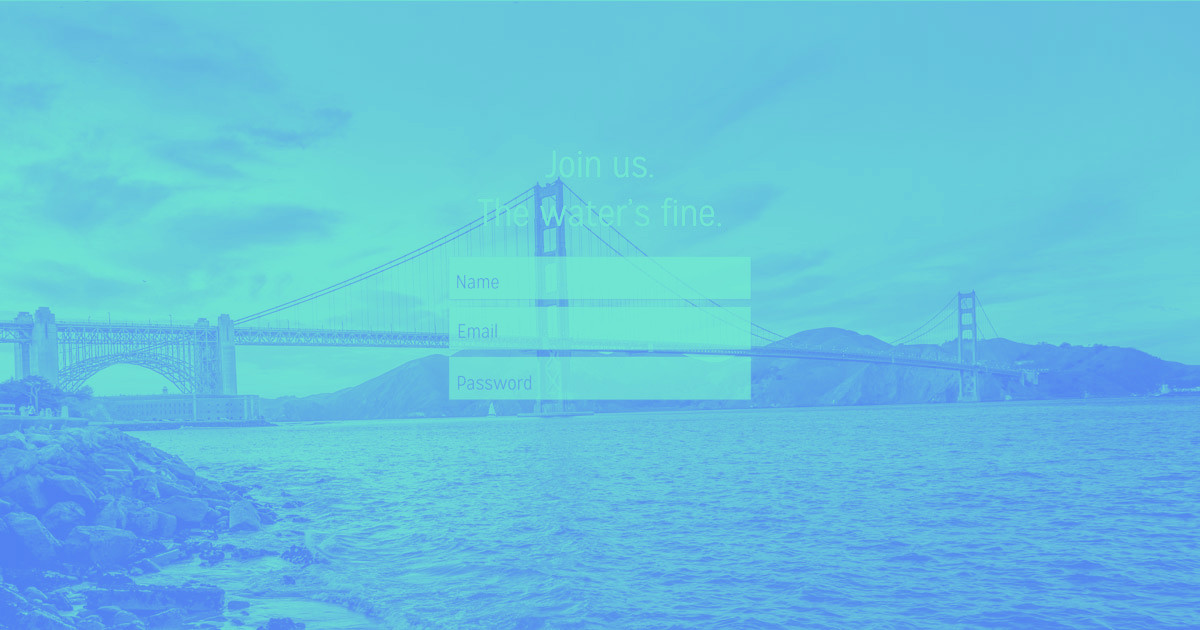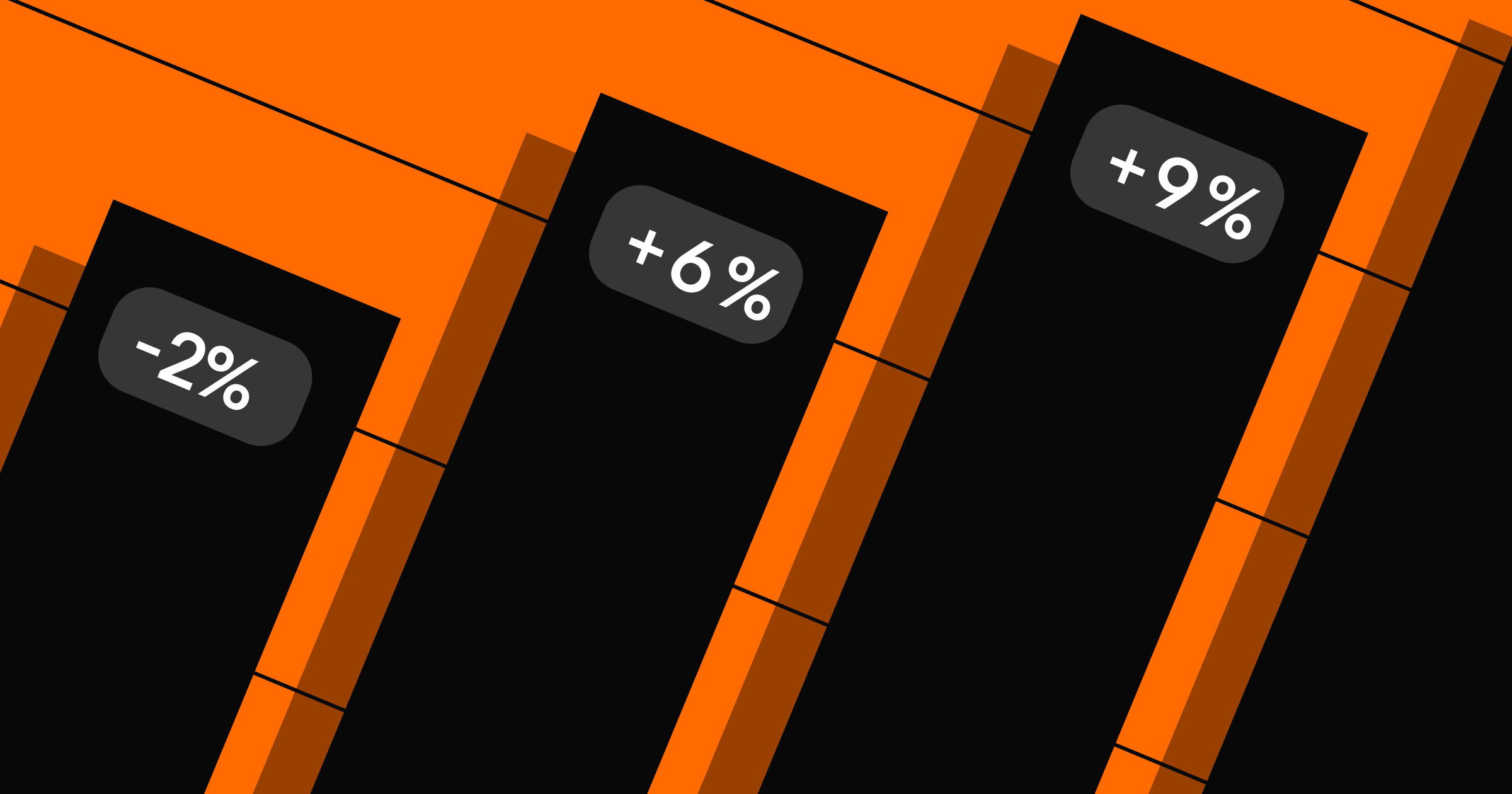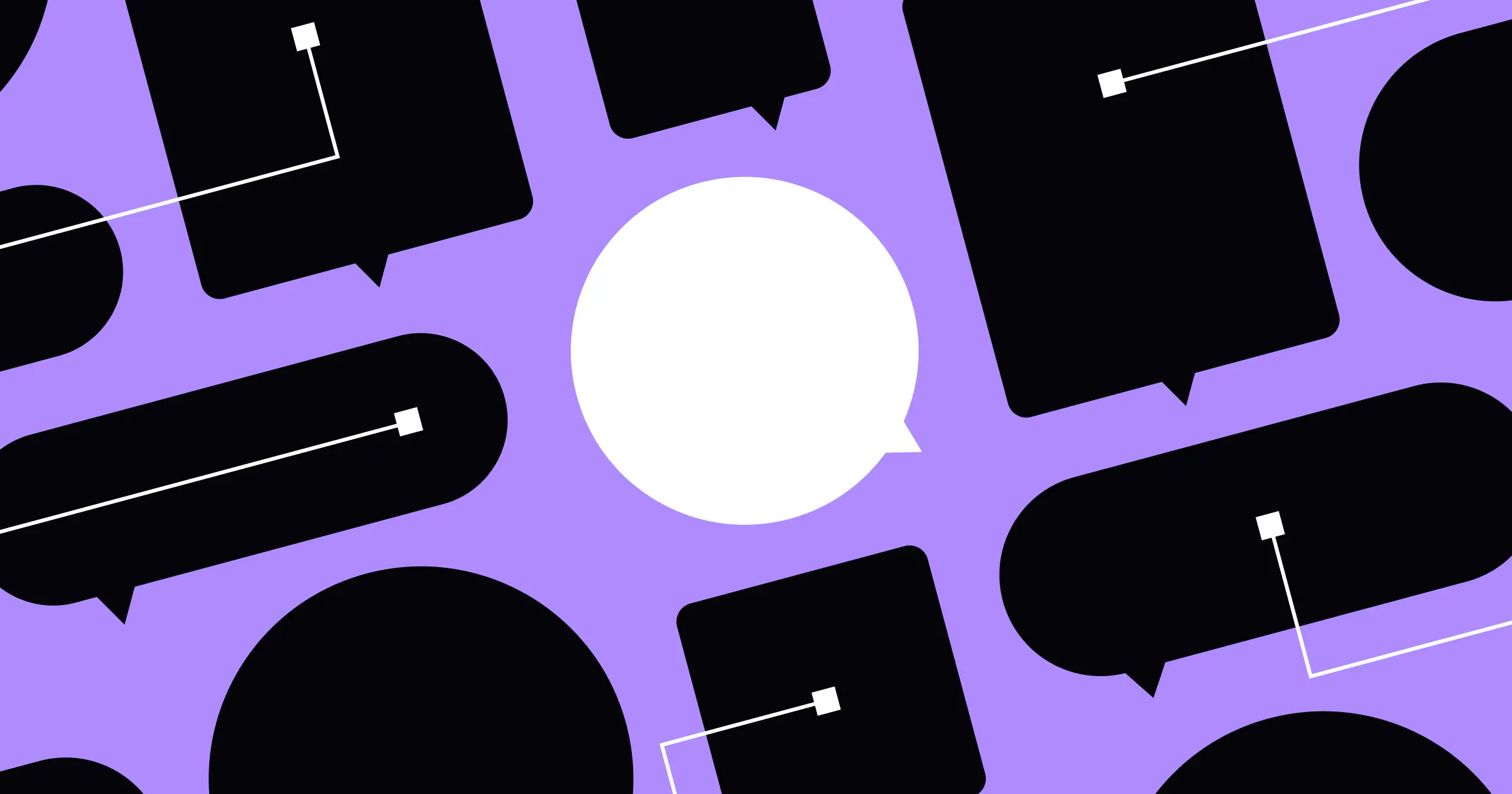Is the age-old feud between web designers and marketers as deeply ingrained as we think? If we share a common goal — to create something incredible — what’s getting in the way of a harmonious relationship? Elijah-Blue Vieau from Looka shares his approach.
Creative integrity, personal goals, and performance indicators can often cause a rift between marketing and design teams. Sure, plenty of digital marketers are great designers, but their decisions are driven by data and specific goals.
Of course, there’s no shortage of web designers who consider conversion rates when mocking up UI elements. But their creative direction is more often influenced by things like brand standards, intuition, and experiences.
The first time I noticed this workplace divide was back in 2011. I’d recently joined a reputable enterprise web development firm as their first Digital Marketing Manager. My job was pretty simple: own and execute online marketing activity. This included SEO, content, social, and email. I also developed and pitched digital marketing strategies for some large clients in automotive, retail, and commercial property development.
I was the only dedicated marketing hire on a team of 30 web developers and designers. I was intimidated beyond belief.
“These people are way smarter than I am. Like ... with actual degrees.”
The first few days were decent. I set up some key tools and processes, and started a full website audit to benchmark key metrics. As you can probably imagine, it didn’t take long to uncover all sorts of gems to resolve: crawl errors, bounce rate increases, average time on page decreases, and a selection of other crowd favorites.
I knew right away that to get some quick wins under my belt, I should endear myself to the gatekeepers of design and development. Though I didn’t truly realize just how important this relationship was back then — I do now.
Where do you start?
I’ve always found communicating with web developers to be very straightforward. Provide them with cause and effect backed up by technical analysis, and — as long as they make sense for the overall form and function of site — they’ll implement your suggestions.
Designers, on the other hand, often need to be shown. And showing requires a very different skill set. So digital marketers — listen up. Here’s your chance to make a real difference.
Consider this field guide my collection of observations, tips, and experiences to get the most from your working (and personal) relationships with web designers — regardless of the project size. Even if it’s a quick logo design, this four-step approach will help.
A word to the wise: You must be willing to develop your creative side and commit to becoming a better marketer with respect for the design process. If you’re a data hound and believe deep down that design is secondary to content and analytics, my approach might irk you. For the rest of you, I promise that if you embrace talking in pixels, hex codes, and feelings, designers around the world will love you that much more.
1. Create a personal connection
Just to be clear, I’m very much a people person. Put me on a stage in front of 500 people or in a room with a complete stranger — I’ll find a way to win my audience. Communication has never been a problem for me. But my crippling anxiety and … humanity … means I still need regular alone time to be a contributing member of society.
First impressions can be deceptive and creating a personal connection is just as much about approach as intention. So, before delivering a barrage of marketing recommendations to your team, take a step back and consider the following:
- Who’s the best person to receive marketing-related design suggestions? Lead designer? Project manager?
- What’s the best medium for those suggestions? Project brief, email, Slack?
- How can you regularly provide suggestions without stepping on toes or insulting the millions of pixels and lines of code layered with love before you showed up?
The first two points will likely be addressed during project kick off, but what about the third? This, my friends, is your entry point — where finding common ground on a personal level comes into play.
Because creating a personal connection is key to building better relationships with your teammates.
Career goals tend to reflect personal goals. By finding out what personal goals, aspirations, or passions your web designer has, you’ll get a better understanding of who they are, why they’re in that role, and what drives them.
For example, while working at the web development agency I mentioned above, I discovered that design requests had to go through both the project manager and creative director. Once that happened, we used Basecamp to delegate tasks.
Thanks to some lunchroom banter, I knew the creative director and I were into a bunch of the same bands, like Radiohead and Neil Young. I also discovered that — like me — he’s a musician with a recording set-up in his apartment.
That personal connection was the foundation for an incredible friendship and working relationship. We went on to do some amazing client work and had an absolute blast together. The foundation of trust built on our personal connection made it easier to share ideas and resolve conflicts.
We no longer work together, but we’re still great friends today!
2. Discover opportunity in difference
Once you've made a personal connection, it becomes much easier to listen, learn, and both earn and develop respect for the designers you’ll be working with. And — I can’t stress this enough — you must be willing to learn. I’m not necessarily saying you need to go out and learn Adobe Illustrator, but I am saying it’s important to learn as much about the designer’s approach and process as possible.
I’ll be the first to admit, marketers tend to throw requests at designers and developers without the emotional or visual context they need. When you take the time to learn about their design process, ask questions, and use visuals, you’ll uncover opportunities amidst the conflict to get clarity and accomplish amazing things that meet everyone’s goals.
And while you’re learning about your design team, take a moment to look up some basics on conflict resolution and the art of finding common ground. Just like analyzing data or choosing the right color palette for a project, finding common ground is an invaluable communication technique to master.
A word to the wise: don’t take push-back personally — especially when it’s coming from your designer or developer. Their departmental objectives and performance metrics are much different from yours. Push-back from a designer is usually the result of how the task or recommendation was communicated. Telling your designer that you don't care what it looks like, as long as it converts? That likely won't translate into purposeful design.



















The modern web design process
Discover the processes and tools behind high-performing websites in this free ebook.
3. Show and tell — but mostly show
While words might be your thing, designers are visual people. When communicating with a designer, include visuals and any colors that have been provided or that come to mind. Even if it’s a wireframe mockup on a napkin sketch or a link to another website, your designer will appreciate that you took the time to speak their language.
Communicating with visuals also means less revision time. I don’t have concrete research to back this up, but I’m pretty sure it’s a thing.
Here are some benefits of visual communication:
- Visuals add emphasis to verbal and written communication. Visuals are direct and can simplify lengthy requests. Want to back up a marketing recommendation with statistics? Include a graph or chart.
- Visuals command attention and are more engaging. We are in a constant state of information overload these days. How much of what you read and hear do you retain? Visuals help us remember.
- Visuals simplify complex requests. Architects use diagrams and schematics to communicate complex information with engineers and contractors. As a marketer, using infographics, charts, and examples of websites doing it “right” can go a long way to getting your point (and direction) across.
A word to the wise: Use emotion when speaking to designers. Describe how you want a design to make viewers feel. Do you want viewers to feel informed or have a sense of anticipation? For the most part, emotions are universal — combining visuals with emotional context can steer the project in the right direction.
4. Remember: a team that tests together, stays together
Split testing, A/B testing, or multivariate testing usually involves creating two versions of a view and splitting your traffic between them to see how the different versions perform. A winning variation should emerge in the form of improved clicks, costs, or conversions.
Testing user engagement or conversion rates on a web page is a recurring task, and when it’s done properly, it produces better solutions and catalyzes departmental cohesion. This was an absolute revelation for me. There’s nothing quite like banding together for a common cause or goal — controlled testing is the perfect activity for designers and marketers (the whole team, really) to collaborate on and achieve measurable wins.
Split tests that marketers and designers can use include, but are by no means limited to:
- Color of call-to-action buttons
- Location of call-to-action buttons
- Style and placement of a web form
- Images on a landing page
- Impact of social proof or badges
Split tests are among the best and most rewarding projects I’ve worked on with designers. We analyze data, brainstorm, hypothesize, wireframe, produce, launch, test, and … we win. If you’re in a work environment where the marketing and design departments are siloed, regular testing can be the glue that brings your teams together.
A word to the wise: Testing not only fosters a culture that respects the data, it’s also the perfect starting point to develop a winning culture focused on performance, accountability, and innovation. A team that tests together wins together. And winning is infectious — once you get a taste, you want more. So why not win alongside teammates you spend 40+ hours a week with?
The moral of the story ...
“Without designers, that great information would be boring. Without marketers, there would be no informative data, no incisive strategy, and no slick textual content that inspires the reader.” —Russ Perry.
Marketers and designers need each other, in more ways than we realize. Design, development, and marketing are the most important spokes on the wheel of digital strategy. When they work together, conquering steep hills and rough terrain is less intimidating. When they don’t? Well ... we all know how it feels to wipe out and eat dirt. It’s pretty much the same, except with your website.
This article was inspired by an article from Russ Perry, founder of Design Pickle.







.jpeg)
























